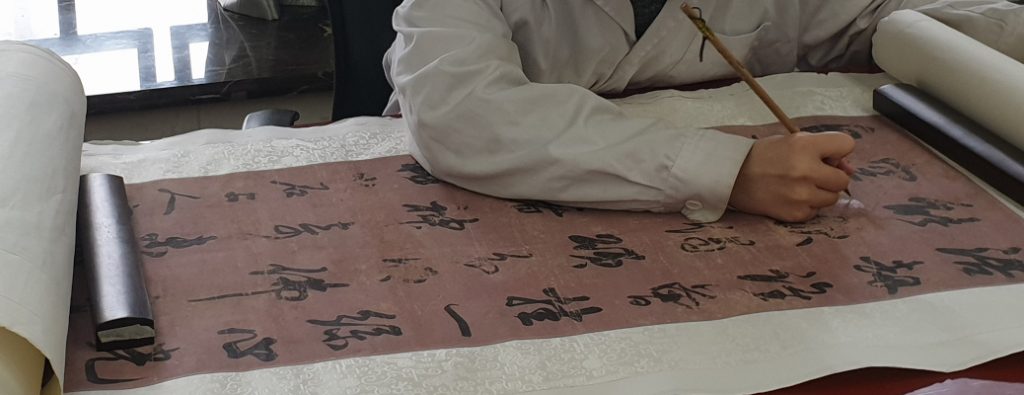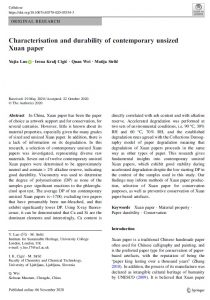Researchers from the Institute for Sustainable Heritage of the University College London, the Heritage Science Lab Ljubljana, and Sichuan Museum in Chengdu, China, recently published the article titled: »Characterisation and durability of contemporary unsized Xuan paper«.
Xuan paper is a traditional Chinese handmade paper often used for Chinese calligraphy and painting, and is the preferred paper type for conservation of paper-based artefacts, with the reputation of being the “paper king lasting over a thousand years”. The paper is widely understood to be of excellent quality and durability; however, scientific evidence for this was conspicuously missing, which is what this research addressed.
In this study, Xuan paper samples were comprehensively evaluated using methods used in paper research, including fibre identification using microscopy, identification of starch and lignin, determination of pH and degree of polymerization (DP), ash content, alkaline reserve, and elemental analysis using X-ray Fluorescence (XRF). Decrease in DP and discoloration were followed during degradation experiments.
Importantly, it was shown that Xuan paper follows the damage function that has been originally developed for western paper, indicating that it is indeed paper pH and starting DP that define the durability of paper, also of Xuan paper.
Their findings may inform methods of Xuan paper production, selection of Xuan paper for conservation purposes, as well as preventive conservation of Xuan paper-based artefacts, and were published in the peer-reviewed journal Cellulose.
This research is a result of collaboration between University of Ljubljana and the UK EPSRC Centre for Doctoral Training Science and Engineering in Art, Heritage and Archaeology (SEAHA), specifically with the PhD student Yujia Luo.


